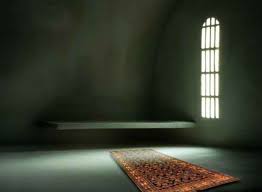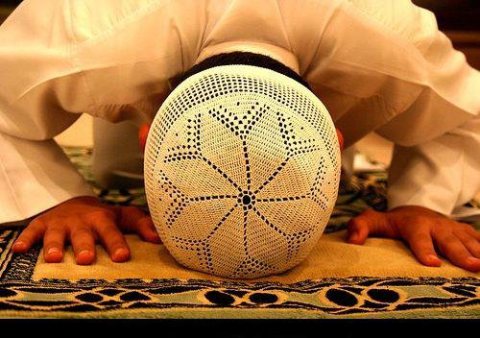1. The virtue of I’tikaaf is not confined to men; women also can take advantage of it. Females will perform I’tikaaf at home and not in the Masjid. The procedure is as follows:
Women should sit for I’tikaaf in that place of the house which has been set aside for Salaah and Ibadah. If no such place has been previously set aside, then a place must be so set aside prior to the commencement of I’tikaaf, and I’tikaaf must accordingly be performed therein. (Shaami)
2. If it is not possible for some reason to set aside a place, then a woman may, at her discretion, demarcate any place within the home and perform I’tikaaf there. (Hindiyyah)
3. The place within the home demarcated for the purpose of I’tikaaf will be her boundary. It is not permissible for her to leave this place without a Shar’i necessity. If she does so, her I’tikaaf will break. Shar’i reasons for leaving the I’tikaaf place are: to go to the toilet, to take an obligatory bath, to make wudhu when necessary, to prepare and bring food if there is no one to do so.
4. It is necessary for a married woman to obtain the consent of her husband for the purpose of performing I’tikaaf. It is not permissible for a woman to perform I’tikaaf without the permission of her husband. (Shami) Husbands should not without reason deprive their wives of performing I’tikaaf by refusing consent.
5. All forms of intimacy are prohibited during I’tikaaf, hence the necessity for the husband’s permission to forego his right of intimacy. Conjugal relations will nullify the I’tikaaf.
6. If a woman has commenced I’tikaaf with the permission of her husband, he may, thereafter, not prohibit or prevent her from completing it. (Hindiyyah)
7. It is necessary for a woman to be free from menstruation and Nifaas (post-natal bleeding) in order to perform I’tikaaf ‑ that is, she cannot perform I’tikaaf in a stage of menstruation and Nifaas.
8. Consequently, a woman should determine whether the date of her menstruation will coincide with the period of I’tikaaf. If the menstruation is expected to occur towards the end of the last ten days of Ramadhan, then she must not perform the Sunnah I’tikaaf. She may perform Nafl I’tikaaf for the period until the arrival of her menstruation.
9. If a woman has commenced I’tikaaf, and thereafter menstruation commences, her I’tikaaf will break. In such a situation, it is compulsory to make Qadha I’tikaaf of only one day.
The procedure of such Qadha is as follows:
After the woman becomes pure of such menstruation, she will commence I’tikaaf just before sunset (as when first commencing the Sunnah I’tikaaf). The I’tikaaf will end on the sunset of the next day (24 hours). During the Qadha, she must fast for the I’tikaaf to be valid. If days remain in Ramadaan, then she may make Qadha in Ramadaan in which case the fast of Ramadaan will be sufficient. However, if she makes Qadha after Ramadaan has ended, then she must specifically keep a fast for the Qadha of I’tikaaf. (Commentary to Beheshti Zewar)


